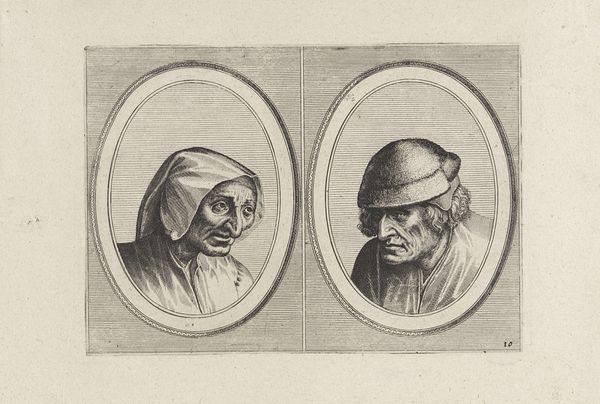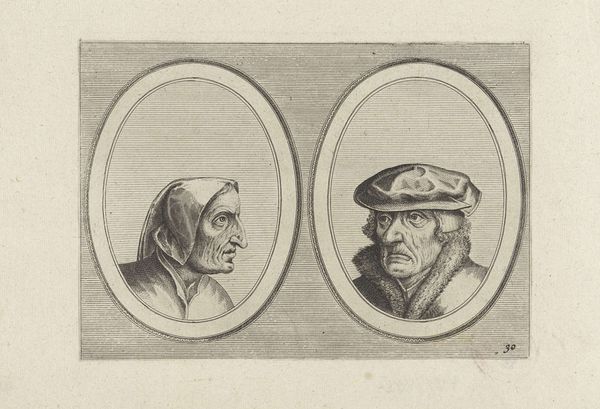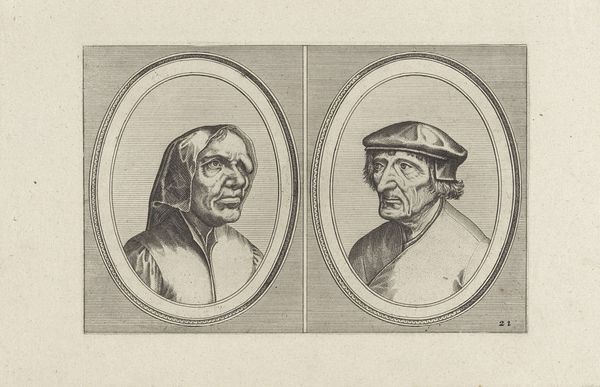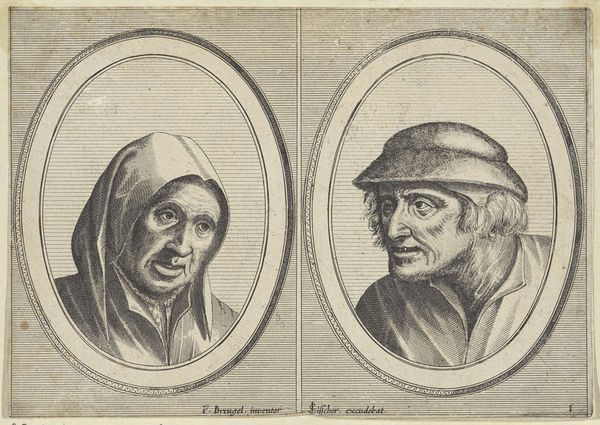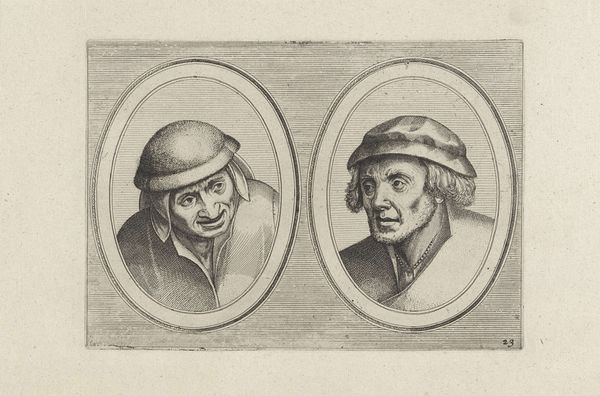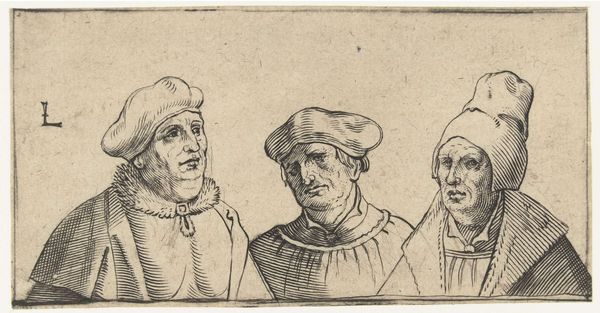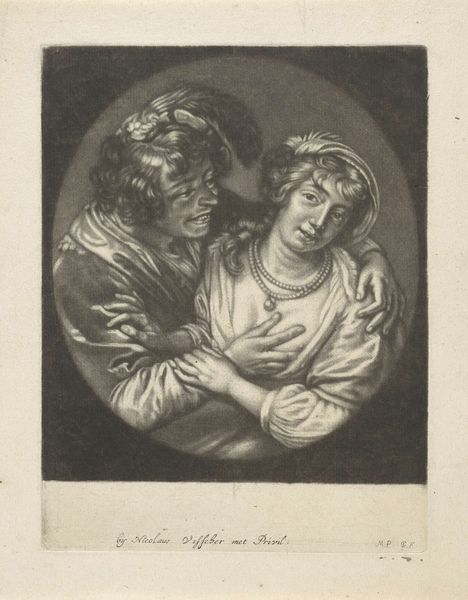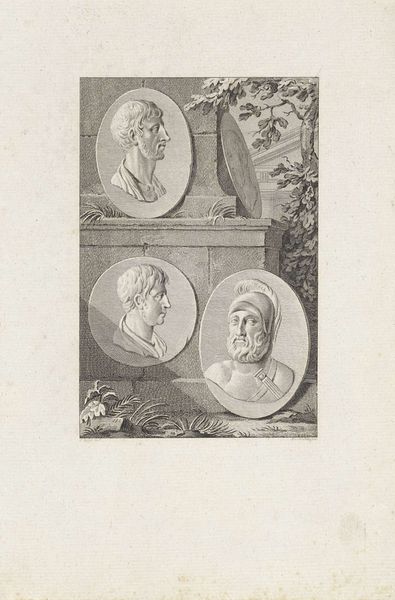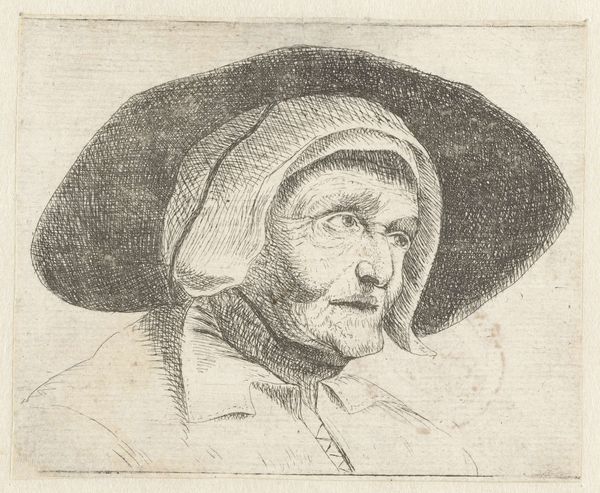
print, engraving
#
portrait
#
medieval
# print
#
old engraving style
#
figuration
#
line
#
genre-painting
#
academic-art
#
engraving
Dimensions: height 133 mm, width 190 mm
Copyright: Rijks Museum: Open Domain
Editor: So, this is "Hansje Singh in 't Veldt en Blaeuwe Aecht," a print made sometime between 1612 and 1652 by Johannes or Lucas van Doetechum. What strikes me is the stark contrast between the figures, especially in their expressions. What can you tell me about the stories these faces tell? Curator: This print offers a glimpse into the social dynamics and perceptions of gender and identity in 17th-century Netherlands. Consider how the artist presents these figures – one, seemingly in distress, the other perhaps in contemplation. What narratives are constructed around their genders, social standing, or even their supposed morality based solely on appearance? Editor: That's a really interesting way to approach it. I guess I hadn't thought about what the artist was trying to say by putting these specific images next to each other. Curator: Right, prints like these circulated widely. How might these portrayals reinforce existing societal biases or spark conversations challenging them? The "Blaeuwe Aecht", or blue Aecht, possibly signifies a certain social type, and her portrayal begs us to analyze how stereotypes were visually perpetuated, influencing public opinion about women who deviated from social norms. Editor: It's fascinating to think about how much social commentary could be packed into a simple print like this. Were there common tropes or assumptions about these "types" of people at the time? Curator: Absolutely! Understanding these tropes—considering prevailing views on class, gender, and perhaps even "madness"—is crucial to unpacking this artwork's complex message. The act of displaying them together is loaded. Why juxtapose such different perceived states of being? Is it critique, commentary, or mere entertainment? What do you think? Editor: I never really thought about prints as holding social commentary, but I realize there's definitely so much there once you start digging into these historical narratives. Thank you! Curator: It is also important to consider the limitations inherent in printmaking; in what ways does it either challenge or support assumptions? I'm so glad we got to explore the cultural meanings layered into it.
Comments
No comments
Be the first to comment and join the conversation on the ultimate creative platform.
